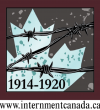Our mission is to preserve, protect and archive artifacts related to the Canadian experience of the First World War and to inform Canadians of the same. We do not attempt to highlight the large historical events of the war, but rather present personalized narratives of the many experiences that touched Canadians during this period.
Learn more about us at our website www.greatwarcentre.com




